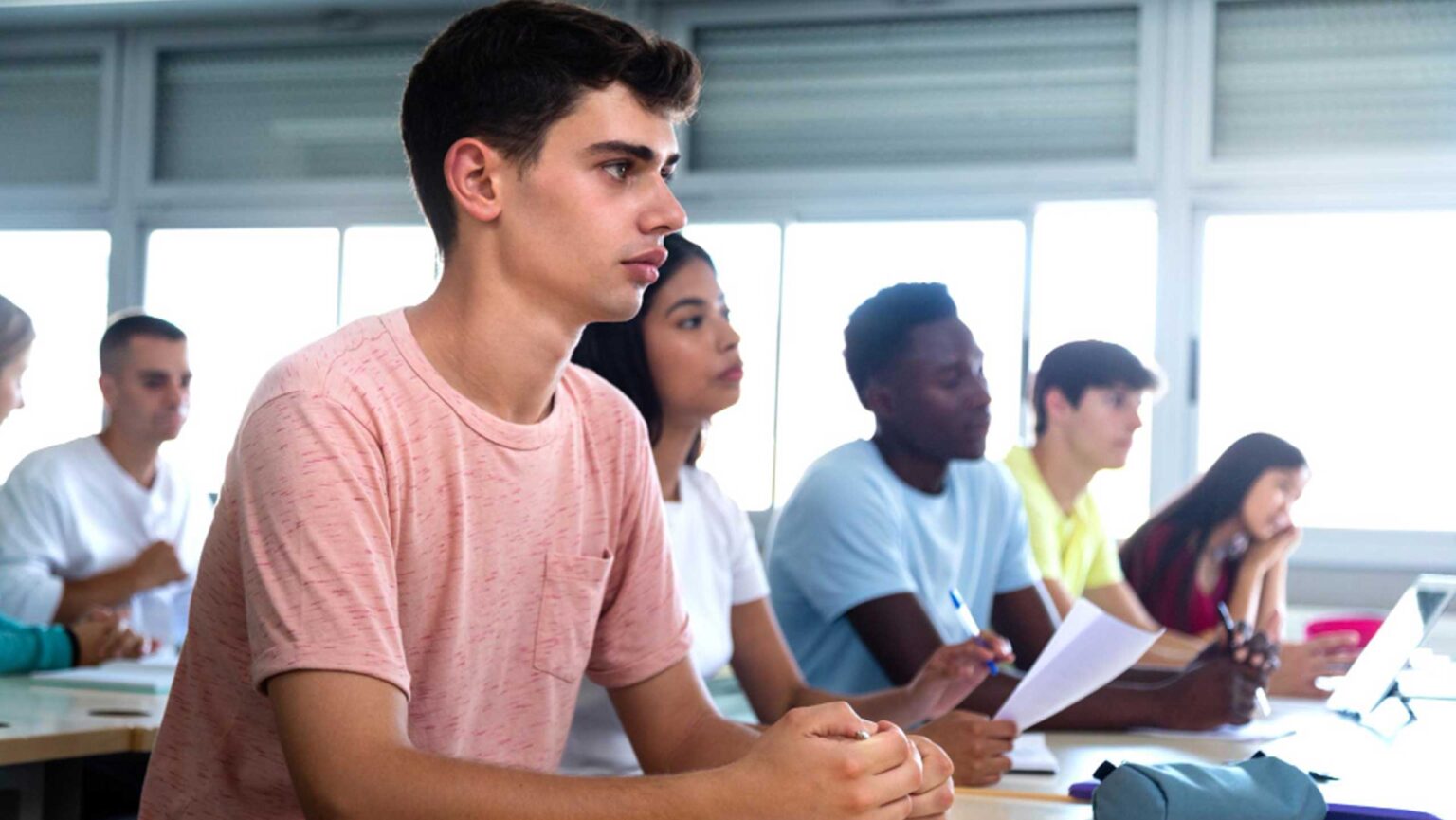With the many distractions students face, engaging high school students in the learning process can sometimes be a slightly challenging task, which is why it’s crucial to employ strategies that not only capture their attention but also maintain their interest over time.
In this article, we will explore ten effective engagement strategies for high school students that will help educators create an environment where students are motivated, enthusiastic, and actively involved in their education, as well as increase student engagement and keep students engaged!
Each strategy is elaborated upon to give you a comprehensive understanding of how to implement them effectively!
Table of Contents
Engagement Strategies for High School Students
1. Interactive Learning
One of the most effective ways to engage high school students is through interactive learning. This approach involves students actively participating in their education rather than passively absorbing information.
Techniques such as group discussions, debates, and interactive projects encourage students to think critically and collaborate with their peers.
For instance, a science class might benefit from a hands-on lab experiment where students can test their hypotheses and see the results firsthand.
This method not only reinforces the material but also makes learning more exciting and memorable.
2. Incorporate Technology
Today’s students are digital natives, so incorporating technology into the classroom can be a powerful engagement tool.
Utilizing tools such as educational apps, online quizzes, and interactive whiteboards can make learning more dynamic, and many students can benefit from that!
For example, using platforms like Kahoot for quizzes or Nearpod for interactive lessons can turn a standard lesson into a fun, game-like experience. Technology can also facilitate personalized learning, allowing students to progress at their own pace and explore topics that interest them most.
3. Real-World Applications
Connecting academic content to real-world scenarios is another strategy to engage high school students.
When students see how what they are learning applies to the world outside of school, they are more likely to be interested and motivated.
For example, a math teacher might demonstrate how algebra is used in architecture or engineering, while a history teacher might connect historical events to current global issues.
These connections help students understand the relevance of their education and inspire them to learn more.
4. Project-Based Learning
Project-based learning (PBL) is an instructional method where students learn by actively engaging in real-world and personally meaningful projects.
PBL allows students to work on complex questions or problems over an extended period, which can increase engagement by giving them a sense of ownership over their learning.
For instance, a social studies class might work on a project to develop a mock government or create a documentary about a local historical event.
These projects not only teach academic content but also develop important life skills such as teamwork, problem-solving, and critical thinking.
5. Student Choice
Giving students a voice in their education can significantly boost their engagement.
Allowing them to choose topics for research projects, books for reading assignments, or even the format of their presentations can make learning more personal and enjoyable.
This strategy acknowledges students’ interests and strengths, which can lead to increased motivation and a more positive attitude toward school.
For example, in an English class, students might choose between writing a traditional essay, creating a video, or designing a website as their final project, depending on their strengths and preferences.
6. Collaborative Learning
Collaborative learning involves students working together in groups to achieve a common goal. This method fosters a sense of community in the classroom and encourages students to support each other’s learning.
Whether through group projects, peer reviews, or study groups, collaborative learning helps students develop communication and interpersonal skills.
An example might be a group project in a biology class where students are tasked with creating a presentation on the human body systems, with each student responsible for a different aspect of the project.
This approach not only helps students learn from each other but also builds a sense of accountability and teamwork.
7. Flipped Classroom
The flipped classroom model is an innovative teaching strategy where traditional homework and in-class activities are reversed.
Students watch lectures or review materials at home and then engage in hands-on activities, discussions, and problem-solving during class time.
This approach allows for more interactive and personalized learning experiences, as students come to class prepared to apply what they’ve learned.
For example, in a math class, students might watch a video tutorial on solving quadratic equations at home and then work on practice problems in class with the teacher’s guidance. This method can make classroom time more productive and engaging.
8. Gamification
Gamification involves incorporating game-like elements into the learning process to increase engagement.
This can include earning points, leveling up, or receiving badges for completing tasks. Gamification taps into students’ natural desire for competition and achievement, making learning more fun and motivating. For instance, a history teacher might create a simulation game where students take on the roles of historical figures and make decisions that affect the course of history.
This strategy not only makes learning more enjoyable but also reinforces content in a memorable way.
9. Culturally Responsive Teaching
Culturally responsive teaching involves recognizing and honoring students’ cultural backgrounds in the learning process.
This approach makes learning more relevant and accessible to students from diverse backgrounds.
Incorporating multicultural content, using culturally relevant examples, and fostering an inclusive classroom environment, teachers can engage all students more effectively.
For example, in a literature class, the teacher might include works from authors of diverse backgrounds and encourage students to explore how their cultural heritage influences their perspective.
This approach not only engages students but also fosters a greater understanding and appreciation of diversity.
10. Regular Feedback and Reflection
Providing students with regular feedback and opportunities for reflection can significantly enhance their engagement.
Feedback helps students understand their progress and areas for improvement, while reflection encourages them to think critically about their learning experiences.
Teachers can incorporate self-assessment, peer feedback, and teacher evaluations into their routine to create a continuous learning cycle.
For instance, after completing a project, students might be asked to reflect on what they learned, what challenges they faced, and how they can apply their knowledge in the future.
Conclusion
Engaging high school students in their education requires creativity, flexibility, and a deep understanding of what motivates them.
Implementing the strategies outlined in this article, educators can create a learning environment that is not only educational but also exciting and relevant to students’ lives.
Whether through interactive learning, technology integration, or culturally responsive teaching, these strategies can help teachers connect with their students and inspire a lifelong love of learning!




